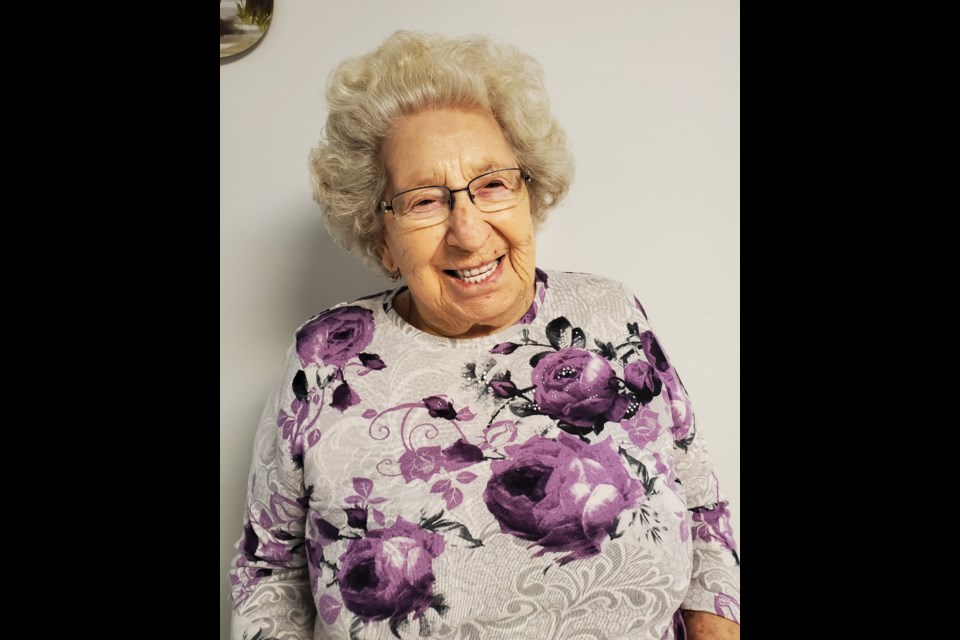Sending and receiving mail was a big morale booster for servicemen during the Second World War since they could regularly stay connected with their mothers, girlfriends and wives wherever they were stationed.
For Florence (Flo) Huttala, working in the post office allowed her to open those letters and read what the men were receiving — and some of the humorous things they were sending to their significant others.
“The (corny) line the guy gave his girlfriend. We always discussed it, (us) two girls at the post office,” she chuckled. “I liked the post office. There was so much mail.”
She was likely able to look at the mail because of censorship issues during the war.
Huttala served in the Royal Canadian Air Force (RCAF) Women’s Division during the war. She was stationed in Patricia (Pat) Bay, British Columbia — near Victoria — for the duration of the war, while she spent most of her time working at the post office.
“We had an army sergeant in charge of the post. He was a good, nice friendly person,” said the 99-year-old. “We had to go get the mail from the delivery service. And if it was bad weather, he always went instead of sending us.”
At one point, Huttala’s father and sister were both stationed at the same base as her. They were able to take a picture together before the other two were eventually shipped elsewhere.
Air force facts
The military created the Royal Canadian Air Force (RCAF) Women’s Division on Feb. 3, 1942, although it was originally founded as the Canadian Women’s Auxiliary Air Force on July 2, 1941.
There were 17,038 women who served in the RCAFWD, with 30 dying on active service. Personnel served in Canada and overseas, including the headquarters of the RCAF Overseas and No. 6 (RCAF) Group of RAF Bomber Command in Britain. Women served in 69 of 102 trades in the RCAF, including aircraft maintenance and air traffic control.
The military eventually disbanded the group on Dec. 11, 1946.
From prairies to mountains
Huttala was born in 1923 in Scotland before her family moved to Moose Jaw when she was six.
The Second World War was in its third year when she enlisted in Regina in 1942 at age 19. She and other young women were shipped by train to Rockliffe, Ont., for training, which proved quite tough for the Prairie girl.
The military did not provide the women with uniforms at first. Instead, they were forced to wear coveralls.
“We had to march down the street; we did a lot of marching and drills,” Huttala recalled.
After training finished, Huttala and the other women were shipped back west to the West Coast. They travelled through the mountains during their train journey, a new and thrilling experience for the Moose Javian.
“I was tired of living on the Prairies,” she said. “I was glad when they posted me to B.C.”
Along that rail journey, Huttala happened to see her brother while passing through a train station in a small town on the Prairies.
“It was night when we went through this town. And here I saw him. And he just happened to turn — and I was waving,” she said. “And I couldn’t believe that I saw my brother there. It was such a nice (sight).”
One of the main activities at the air base in Pat Bay was dancing, which everyone seemed to enjoy.
“I loved dancing,” Huttala recalled wistfully.
Dancing was what everyone did when the war in Europe ended on May 7, 1945, with the air base throwing a big party to celebrate. The base personnel had a great time “cutting a rug,” as did Huttala, who enjoyed every minute of it.




